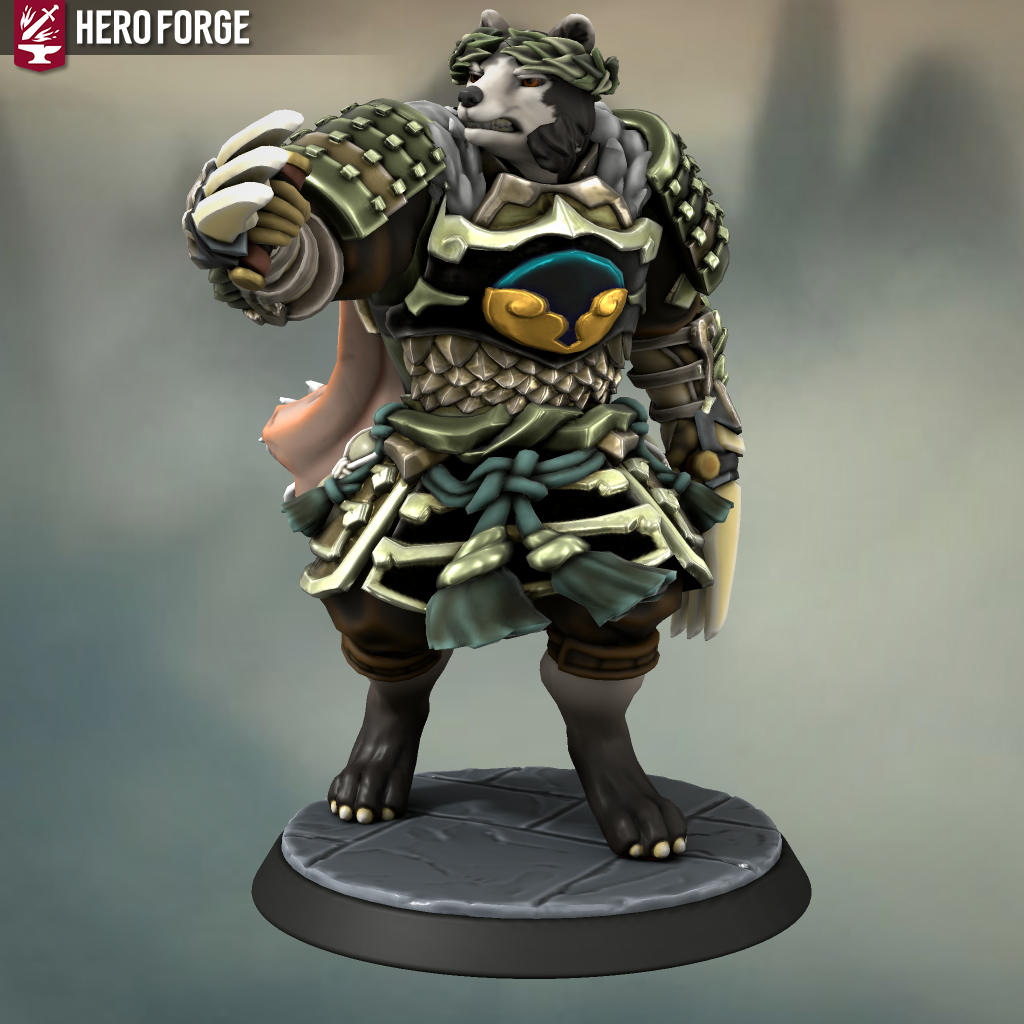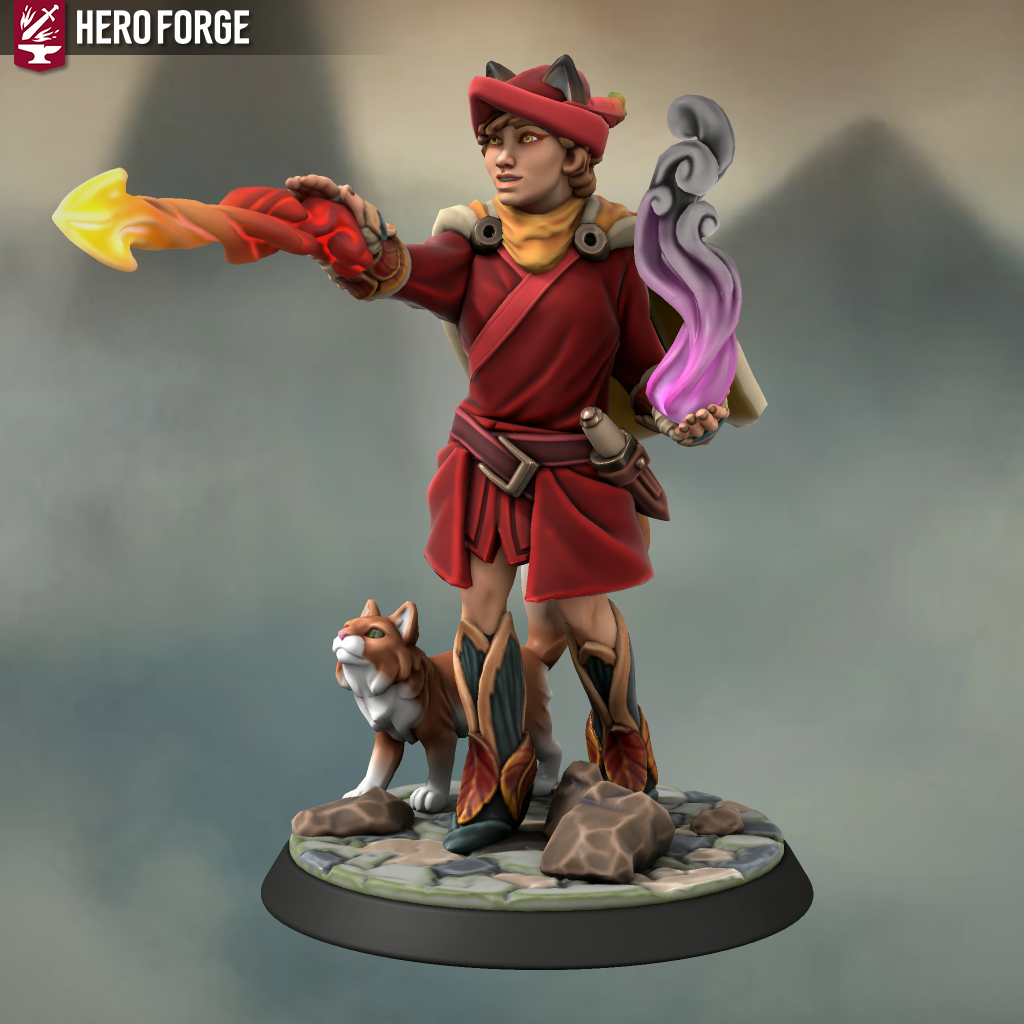Hengeyokai
In the world of New Generica, hengeyokai are fae created when animals spend enough time in areas suffused with magic. Over time and under the influence of the psychic emissions of nearby human settlements, these animals gain a modicum of sentience and the ability to assume human and hybrid forms. These creatures then almost invariably find their way into the lives of nearby humanoid settlements, such as High Hedgemont, where their presence causes mischief at best and violent confrontation at worst.
Basic Information
Anatomy
Hengeyokai in their natural form are nearly indistinguishable from normal animals of their type. They can assume the forms of humans, granting them speech, the ability to walk upright, and use tools, in which case they may only retain small hints of their original forms that fit within human bounds (i.e. eye color). A given hengeyokai always appears the same when taking its humanoid form, but their connection with fae transmutation magic gives them a natural talent for disguse and a limited ability to tweak their facial features within human bounds (i.e. graying hair). A hengeyokai can also take on a bipedal 'hybrid' form that resembles a grotesque amalgamation of humanoid and animal traits, allowing the creature to use its claws, bite, or other useful animal features while still retaining the ability to talk and manipulate objects after a fashion. This hybrid form has been known by many names over the years, including 'werewolf'; in New Generica, it is a persistent myth that one can contract lycanthropy if bitten, though rabies and bacterial infections are still transmissible by an infected hengeyokai's bite and hengeyokai highwaymen like to prepetuate rumors to this effect.
Genetics and Reproduction
Hengeyokai breed true as humans in their humanoid form and as their base animals in their animal forms. The fae magic that creates a hengeyokai (see Biological Cycle) functions as a recessive allele among animals. Human descendants of hengeyokai often have a natural talent for transmutation magic and perhaps a whimsically irreverent personality (see Myths & Legends), but typically do not attain an animal or hybrid form without advanced study or fae intervention. Some rare hengeyokai pairings, especially in hybrid form among conspecifics, may result in near-humans with some animal traits; these permanent hybrids may then go on to breed true to create new species (see Interspecies Relations).
Biological Cycle
Hengeyokai are otherwise indistinguishable from their animal forebearers in terms of their biology unless and until they spend a sufficient amount of time under the influence of fae magic. Areas of the Crystal Wood suffused with fae magic temporarily arrest the aging process once a creature reaches maturity; if that creature then attains an age of at least 50 as a result of that preservative effect, then it may gain the sentience and self-transmogrification powers that define a hengeyokai. Once so empowered, hengeyokai do not age until they determine where on the spectrum of human and fae they want to fall (see Interspecies Relations) for the remainder of their existence.
Civilization and Culture
Historical Figures
Koga the Indomitable is a former badger and the most powerful known hengeyokai in the Great Lookout Mountains. A warden of the Crystal Wood who thus far rejects the enticements of both the human and fae realms, Koga fights to keep the boundary between the realms separate out of a belief that they will likely destroy New Generica should one gain dominance over the other. Koga is respected and feared for his unnatural resistence to hengeyokai differentiation (see Interspecies Relations), his long influence over the politics of near-human and hengeyokai tribes in the area, his knowledge of a world history that he dares not share, and his incredible grasp of transmutation magic. Koga is said to be so talented with inner alchemy that he is utterly undifferentiated beneath the skin, has no set shape or proportion, and can shift his very bones to create deadly new claws and horns on a whim. Woodsmen and spirit cougars alike have been said to slash at him with the intent to kill - only to watch in horror as his sundered limbs reassemble themselves like droplets of water pulled back together by their own surface tension.
Common Myths and Legends
New to sentience and society but not to the world or its dangers, hengeyokai tend to embody the 'mischevious outsider,' and 'fish-out-of-water' tropes in mythology. The disconnect between their animal instincts and human intellect cause many hengeyokai to come across as mischevious and irreverent, but they usually have the discipline to keep these impulses in check to accomplish some greater goal. Marriages between humans and hengeyokai in their human form typically result in human descendents that share these personality traits, and many of the rebels found in the Old Generican historical texts at the University of High Hedgemont allude to such an ancestry.
Interspecies Relations and Assumptions
Hengeyokai ascended from the ranks of social animals tend to do the best among other humanoids, as these are more likely to attemt to conform to the norms of human society to the extent possible for their level of understanding. The mores and taboos of human cultures seem strange to hengeyokai at first, but the same fae magic that allows the creature to take its humanoid form also blesses it with the human capacity to learn, adapt, and interpret.
Early experiences with humans have a strong influence on how a hengeyokai will interact with humans later in life, and those who come from game (i.e. rabbits) or traditionally reviled species (i.e. skunks) are more likely to view humans with hatred in kind. Importantly, as humans are omnivorous generalists that have only comparatively recently surmounted the food chain, hengeyokai in their human form don't replicate predator/prey dynamics in their personalities as one might otherwise expect. Combat is an exception to this rule, where hengeyokai from low on the food chain are more likely to flee while others are more easily goaded into attacking with abandon.
Hengeyokai cannot walk both the human and fae worlds forever. Over time, hengeyokai that spend much of their time with humans either come to completely identify with them, shedding much of their more animal identity except when overcome with stresses, or yearn desparately for their simpler previous life, retreating to the wild and taking on animal or hybrid forms among the fae. Choosing the humanoid path allows the hengeyokai to retain its speech, intellect, and the company of friends, but it also causes their immortality to end and consigns the individual to death over a human (albeit magically extended) lifespan. Choosing the fae path forces to the hengeyokai to retreat from human companionship, technology (especially metals), and intelligible speech, but allows them to retain immortality and pursue ever more powerful arcana. The rare few that linger for decades at the boundary between these states may be the true ancestors of the near-human races native to the Great Lookout Mountains, such as the pekori.
Related Organizations





Comments